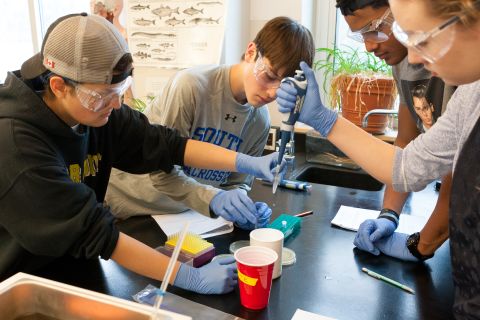Sometimes we forget that our students are, first and foremost, people. It is human nature to be more interested in things and subjects that we are familiar with and care about. Making STEM subjects, and more specifically biotechnology, engaging to students is critical for them to gain and retain the most from the learning experience. Here we provide some best practices to help you ensure that all of your students will become and remain engaged throughout your class sessions.
- Promote self-directed learning: After providing foundational laboratory skills to your students, provide them with the opportunity to take initiative over their learning by designing their own experiments. You can do this as an extension to an existing lab or build off new content. This approach will help them think independently as well as embrace learning through trial and error, much like a scientist.
- Encourage communication: Give your students opportunities to discuss their work with you and their peers. This can take different forms, including peer-to-peer interaction, explanations of their classwork for family members through letters home, and student-led presentations of laboratory work and results in-person or on video. In addition to honing important presentation skills, this method, whether formal or informal, graded or ungraded, will increase students’ levels of subject matter mastery.
- Provide hands-on learning opportunities: Where biotechnology truly shines is in hands-on learning. Learning through participation in wet labs and the use of manipulatives like beads tend to make learning science not only more valuable but more memorable. Research literature has shown that students who participate in active learning (learning by doing) perform better on STEM-related assessments.
- Require collaborative teamwork: To keep activities affordable, biotechnology experiences in schools usually require collaboration and student teamwork. In addition to saving money on materials, working in groups is a valuable skill that students will use throughout their education and into the professional world. Providing students with the opportunity to listen and learn from their classmates while also constructively voicing their own ideas is a cornerstone of education in all subjects.
- Create real-world connections: Applying relevant, realistic connections between content and real-world scenarios and issues is a powerful way to engage students. Whether you do so through case studies or project- and/or placed-based learning, applying biotechnology skills to real-life situations allows students to make connections with tangible problems and solutions, increasing student interest and enthusiasm toward their learning.
Do you have any ideas and strategies for increasing student engagement in your biotech classroom? Tweet them to @ABEProgOffice or email them to ABEInfo@edc.org.
